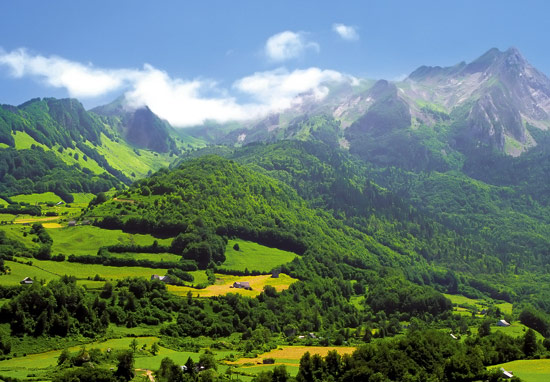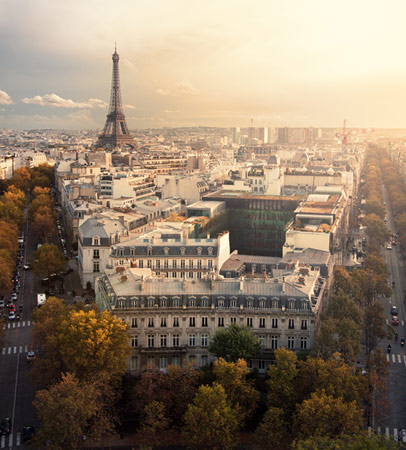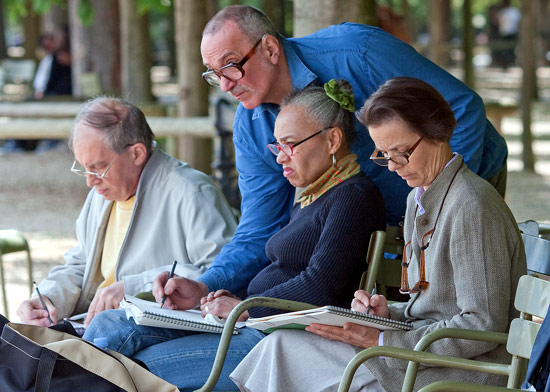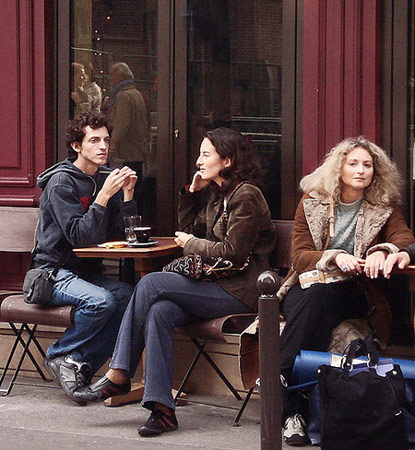Country Snapshot: Country Snapshot
Land/Geography/Regions
France is located in Western Europe and is the largest European country, covering about 640,000 square kilometers (247,000 square miles). France shares borders with Italy, Germany, Belgium, Spain, Luxembourg, Monaco, Andorra, and Switzerland. The country has multiple coastlines, lying along the English Channel in the northwest while the southwest coast fronts the Bay of Biscay. The southeastern coastal region of France is along the Mediterranean Sea and is known as the French Riviera. France also controls multiple islands and islets within these waters, the largest being Corsica.
France has numerous overseas regions, departments, and collectives, which include French Guiana, Réunion, Saint Martin, and French Polynesia. The territory within the European continent is referred to as Metropolitan France.
In the east of Metropolitan France are the French Alps, with the Pyrenees Mountains in the southwest. North of the Pyrenees is a highland region known as the Massif Central. France is home to many large rivers, including the Rhȏne, Seine, Loire, and Garonne. Lake Geneva, in the east, forms part of France’s border with Switzerland.
People and Culture
The majority of France’s population are ethnic French who typically have Celtic, Italic, and German ancestors. There are also Scandinavian, Liguarian, and Alemmanic ancestries within this ethnic group. Italians, Africans, Turks, Spaniards, Poles, and Greeks can also be found throughout France.
French is the official language though many languages are spoken throughout the country. Many are spoken regionally, including Catalan, Occitan, Flemish, and Breton. Also spoken within small communities of France are Arabic, Portuguese, Spanish, and Italian.
As a secular country, France does not recognize any official religion and freedom of religion is guaranteed. Christian religions dominate, with Catholicism the most popular. There are also significant numbers of Muslims and Jews.
The culture of France has had a profound impact on the rest of the world through its philosophy, literature, cuisine, art, fashion, and architecture. France is regarded as a global center of high culture and the French are considered proud romantics, interested in the finest things the world has to offer.
History
Cave paintings found in the country’s southwest date human activity in France to 18,000 years ago. In 600 BCE, the Ionian Greeks established the city of Massalia, which is now known as Marseille, the oldest city in France. Gallic Celtic tribes also began to settle throughout France during the same period but dispersed much more broadly.
Sometime between the 5th and 3rd centuries, the Celtic tribes formed the nation known as Gaul, which had borders very close to modern France’s. The Gauls were adversaries of the Romans and the groups feuded regularly, with the south of Gaul conquered by the Romans in 125 BCE. The entirety of Gaul fell under Roman control in 52 CE.
Clovis I, a Germanic conqueror, came to power following the fall of the Roman Empire. He successfully unified the region’s Frankish tribes into the Frankish Empire, also known as Francia. Over the centuries, France became a naval force and accumulated overseas territories throughout the world.
The monarchy of France was overthrown during the French Revolution, which occurred toward the end of the 18th century. Following this, Napoleon Bonaparte came to power and led France as the country conquered swaths of continental Europe.
World War I and World War II devastated the country and France saw huge economic setbacks and loss of life. Aiming for an enduring peace between France and Germany, as well as closer economic and political ties between European countries, in 1951 France was one of the six founding countries in the establishment of what became the European Union. The modern era sees France as one of Europe’s political superpowers with one of the world’s most influential governments and strongest economies. It is a member of the United Nations (UN) and serves as one of the permanent members of the UN Security Council with veto rights. It is also a member of the Group of Eight (G8) and the World Trade Organization (WTO), and is second only to the USA in the number of diplomatic missions it maintains around the world.
Climate and Biodiversity
Due to its size, France is divided into four climactic zones. The western region has an oceanic climate that is humid in summer and windy during fall and winter. The northern regions are generally cooler, while in the southeast, a Mediterranean climate brings hot, dry summers and damp, mild winters. In the highlands and mountainous regions of France, winters are long and intense, while summers remain cool. These regions can experience subpolar climates with unusually short summers.
Because of its various climates and topography, France has an exceptional amount of biodiversity. The country’s woodlands are home to mammals including brown bear, elk, marmots, ibex, wolves, and polecats. Many species of owls and birds call France home, including the pink flamingo, which is native to southern France. Amphibians and reptiles are abundant and the country’s coastlines along both the Atlantic Ocean and the Mediterranean Sea result in a large number of aquatic species. False killer whales and harbor seals are both native to French waters.
In regards to flora, forest regions have oak, beech, birch, and poplar, with juniper and dwarf pine found in mountainous subalpine zones. Olive trees thrive in the Mediterranean region along with fig trees, wild herbs, and laurel.
Economy
France has a mixed economy and it is one of the strongest in the world. The country is one of the world’s top-ten exporters of manufactured goods, including machinery, computers, vehicles, aircraft, electrical machinery, pharmaceuticals, perfumes, plastics, and mineral fuels. France also has a strong agricultural industry, with top crops including wheat, beef, wine, sugar, cotton, and tobacco.
France has robust energy, technology, banking, manufacturing, mining, and agricultural sectors. The nation’s tourism industry is a fundamental pillar of its economy as well; France is one of the most popular tourist destinations in the world. A large percentage of the French workforce is employed directly or indirectly by the tourism industry. As part of the eurozone, France uses the euro as its national currency.
Government
France has a semi-presidential republic, with governmental power divided across executive, legislative, and judicial branches. France’s territory is divided into 18 regions, five of which are overseas territories. Paris, France’s largest city, is also the country’s capital.
A president is elected to a maximum of two consecutive five-year terms. The president serves as head of state and selects a prime minister who serves as head of government. France’s bicameral parliament is composed of the 577-seat national assembly and the 346-seat Senate. Senators are indirectly elected to serve six-year terms, while members of the national assembly are directly elected to five-year terms.
The highest court in France is the French Court of Cassation, which is the nation’s supreme court of appeal. Other courts include inferior courts as well as intermediate appellate courts. France also has financial courts and administrative courts.
Article written for World Trade Press by Taylor Holloran.
Copyright © 1993—2024 World Trade Press. All rights reserved.

 France
France 



